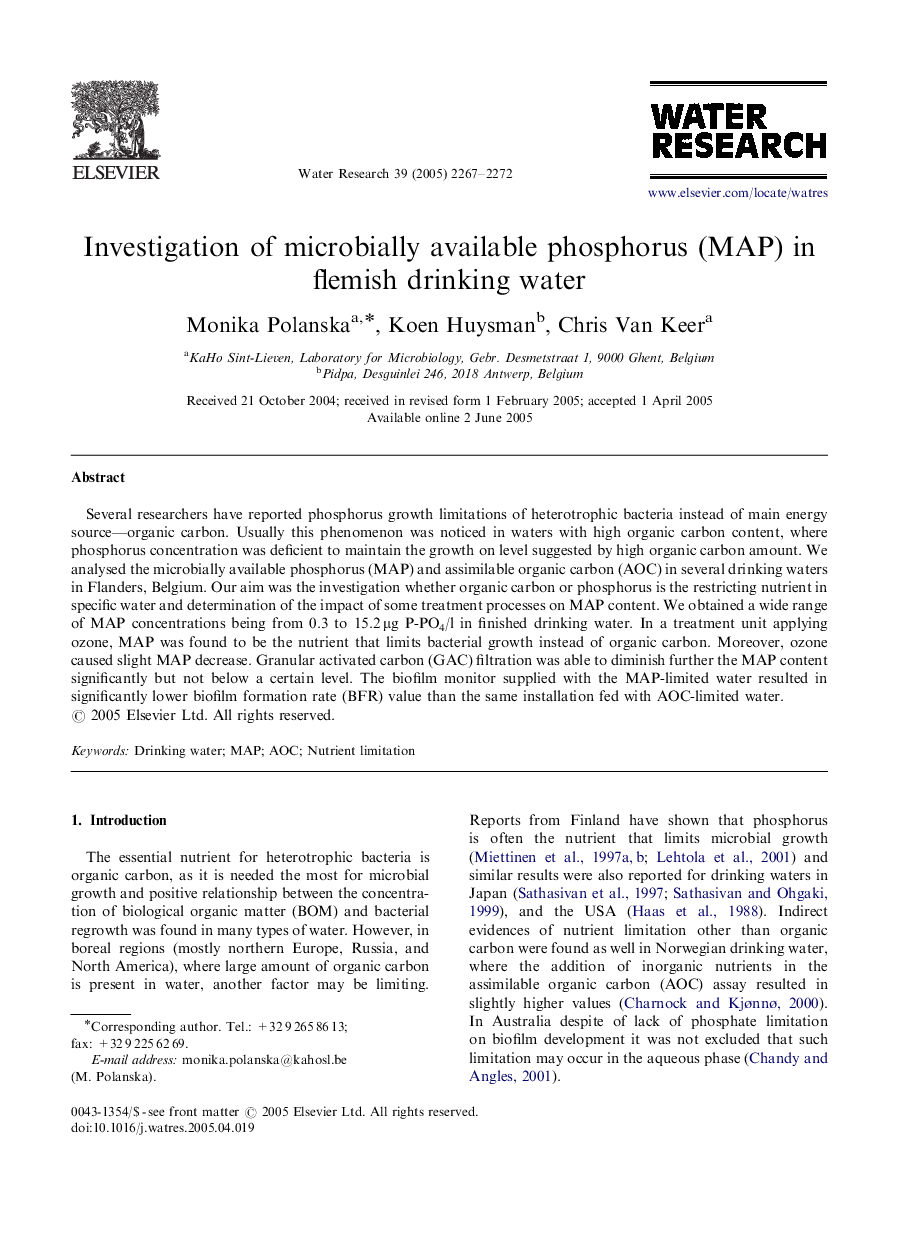| Article ID | Journal | Published Year | Pages | File Type |
|---|---|---|---|---|
| 4487038 | Water Research | 2005 | 6 Pages |
Several researchers have reported phosphorus growth limitations of heterotrophic bacteria instead of main energy source—organic carbon. Usually this phenomenon was noticed in waters with high organic carbon content, where phosphorus concentration was deficient to maintain the growth on level suggested by high organic carbon amount. We analysed the microbially available phosphorus (MAP) and assimilable organic carbon (AOC) in several drinking waters in Flanders, Belgium. Our aim was the investigation whether organic carbon or phosphorus is the restricting nutrient in specific water and determination of the impact of some treatment processes on MAP content. We obtained a wide range of MAP concentrations being from 0.3 to 15.2 μg P-PO4/l in finished drinking water. In a treatment unit applying ozone, MAP was found to be the nutrient that limits bacterial growth instead of organic carbon. Moreover, ozone caused slight MAP decrease. Granular activated carbon (GAC) filtration was able to diminish further the MAP content significantly but not below a certain level. The biofilm monitor supplied with the MAP-limited water resulted in significantly lower biofilm formation rate (BFR) value than the same installation fed with AOC-limited water.
